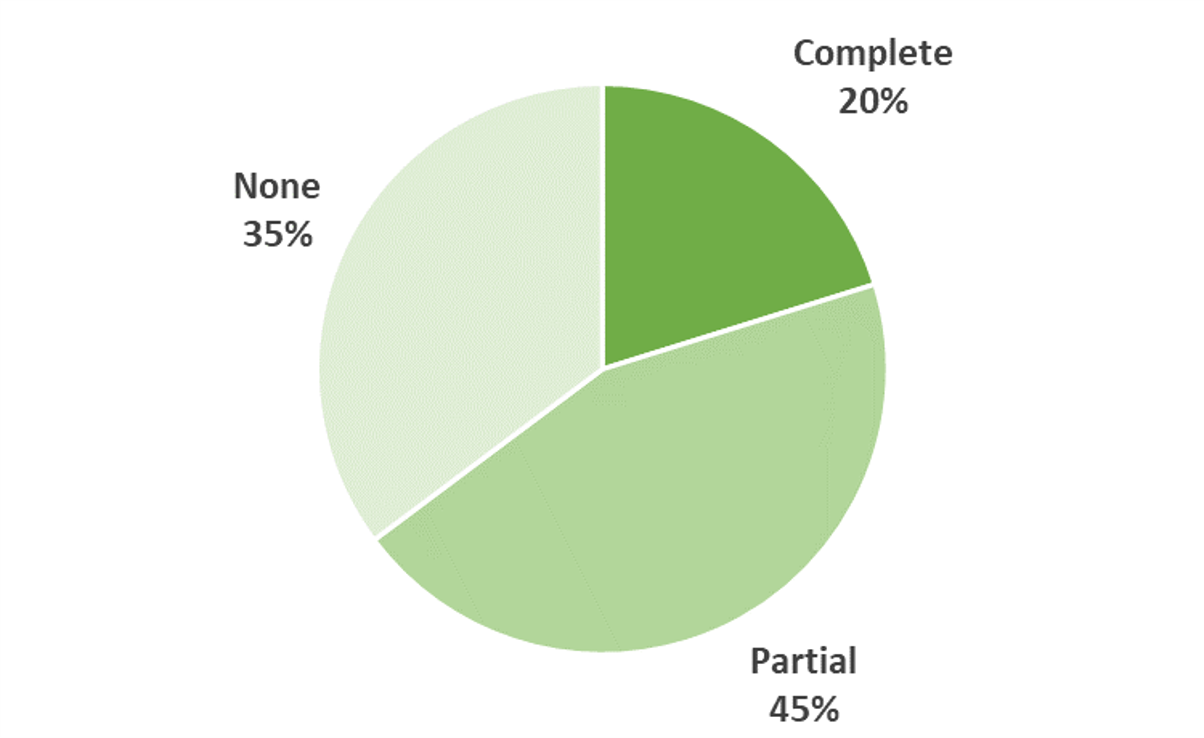|
Secretarybird © Johan Swanepoel/ Shutterstock.com State of the World’s Birds: 2021 Annual Update
This annual update summarises and profiles some of the key developments in bird science and conservation over the last year. Since the last comprehensive edition of State of the World’s Birds was published in 2018, knowledge and evidence has continued to accumulate about the changing conservation status and trends of the world’s birds (STATE), the threats causing birds to decline (PRESSURE), and the conservation actions being taken to improve their status (RESPONSE).
STATEBirdLife International is the official Red List Authority for birds, responsible for assessing and documenting the global extinction risk of all 11,000 species for the IUCN Red List. Following transparent expert discussions on BirdLife’s Globally Threatened Bird Forums, the 2020 Red List update saw 40 species being uplisted to higher threat categories and 78 downlisted to lower threat categories.
Number of species in each IUCN Red List category (numbers in red indicate the net change since the previous year's assessment).
The highest profile change was the uplisting of three once-common and wide-ranging African raptors. Secretarybird Sagittarius serpentarius, Martial Eagle Polemaetus bellicosus and Bateleur Terathopius ecaudatus have been uplisted to Endangered, following alarming rates of decline driven by habitat loss and degradation, poisoning, poaching and disturbance. Conversely, Seychelles Paradise-flycatcher Terpsiphone corvina was downlisted from Critically Endangered to Vulnerable, following a steady population increase over the last two decades and successful reintroduction to two islands. Black-necked Crane Grus nigricollis was also downlisted from Vulnerable to Near Threatened, thanks to successful restoration and protection of its wetland habitat following community engagement.
Case study – The EU failed to meet its 2020 target for birdsRelevant recent news stories
PRESSUREAnalysis of data from BirdLife’s latest species assessments for the IUCN Red List shows that the threats affecting the greatest number of the world’s threatened bird species are (in descending order) agriculture, logging, hunting and trapping, invasive alien species, residential and commercial development, and fire and fire suppression. These same threats also emerge highly from monitoring of Important Bird & Biodiversity Areas (IBAs) by the BirdLife Partnership. The 2020 update to BirdLife’s list of IBAs in Danger includes 277 sites in 48 countries and territories.
The relative importance of different threats to globally threatened bird species based on the impact of the threat and the number of species affected. Only threats of medium or high impact are considered. Many species are affected by more than one threat.
Case study – COVID-19 has had a largely negative impact on bird conservationCase study – Climate change in the Neotropics is predicted to cause range shifts in species for which IBAs have been identifiedClimate change is predicted to cause range shifts in many bird species, which may compromise the effectiveness of protected areas. Species Distribution Modelling of 941 species of conservation concern across the Caribbean, Central and South America shows widespread shifts in species distributions and declines in species richness under climate change. This would have a substantial impact on species assemblages in current Important Bird and Biodiversity Areas (IBAs, Key Biodiversity Areas identified for birds). The turnover of species within IBAs is predicted to vary spatially across the Neotropics, with some IBAs increasing in conservation value and others decreasing. Overall, the IBA network is predicted to remain robust, however dynamic management of IBAs will be necessary to cope with shifting conservation objectives.
The Important Bird and Biodiversity Area (IBA) network in Central and South America, showing turnover in species of conservation concern (i.e. those for which IBAs have been identified) by 2070 under climate change. Values represent ensemble means across three Global Climate Models and an intermediate/ business as usual emissions scenario (rcp45). Source: BirdLife International & National Audubon Society (2017)
Relevant recent news stories
RESPONSEAnalysis of the latest data show that 20% of Important Bird & Biodiversity Areas (IBAs) are now completely covered by protected areas and that 45% of sites are partially covered, while 35% still have no coverage by protected areas. On average, 46% of the area of each IBA is now covered by protected areas, up from 35% in 2000. 
Percentage of Important Bird and Biodiversity Areas (IBAs) with complete, partial, or no coverage by protected areas.
Case study – Conservation actions have prevented up to 18 bird extinctions since 2010
Probability that particular threatened bird species would have gone extinct during 2010-2020 in the absence of conservation action. Points and lines show minimum, best and maximum estimates, averaged across all individuals involved in the expert elicitation exercise (see Bolam et al. 2020 for detailed methods). The probability is set to 1 by definition for species that qualified as Extinct in the Wild at the start of the period. Source: Bolam et al. (2020).
Relevant recent news stories
Previous annual updates: BirdLife's work on State of the World's Birds is generously funded by the Aage V. Jensen Charity Foundation. |